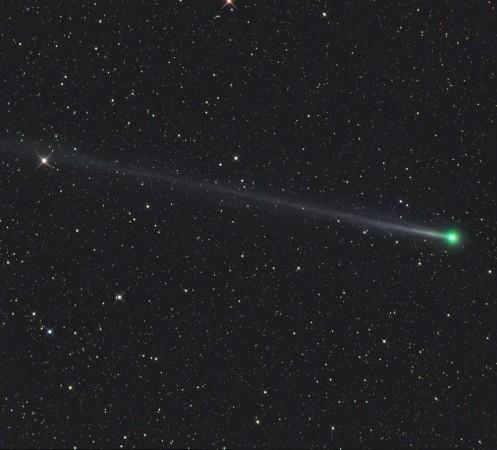
Studying interstellar molecular clouds could yield clues to the origin and evolution of water and other key building blocks necessary for life to arise, scientists say.
The James Webb space telescope, the biggest and most sophisticated space telescope ever built, will target a star-forming region visible in the southern sky called the Chamaeleon Complex when it is launched next year.
The region is shrouded by a frigid molecular cloud, where hydrogen atoms link with oxygen to form water on the surfaces of tiny grains of dust.
These dust particles are eventually swept up by infant planets, delivering materials needed for life to arise as we know it.
Examining the contents of these molecular clouds in detail will be possible for the first time due to the Webb telescope's high-resolution spectrographs.
"If we can understand the chemical complexity of these ices in the molecular cloud, and how they evolve during the formation of a star and its planets, then we can assess whether the building blocks of life should exist in every star system," said Melissa McClure from the University of Amsterdam, who is leading a team to investigate interstellar ices.
The team will use the Webb telescope to peer into the molecular cloud at the Chamaeleon Complex, which contains several hundred protostars, the oldest of which are about 1 million years old.
As light from the stars passes through the cloud, ice particles will absorb some of the light, allowing astronomers to map the ice and locate where different ice are from.
The Webb telescope will be able to measure the amounts and relative abundances of ices as close as 8 billion kilometer from infant star, which is approximately the distance between the Sun and Pluto in our solar system.
Klaus Pontoppidan of the Space Telescope Science Institute said: "Comets have been described as dusty snowballs.
"At least some of the water in Earth's oceans likely was delivered by the impacts of comets early in our solar system's history. We'll be looking at the places where comets form around other stars."
The Webb telescope is a joint endeavor between the US, European and Canadian space agencies.









!['Had denied Housefull franchise as they wanted me to wear a bikini': Tia Bajpai on turning down bold scripts [Exclusive]](https://data1.ibtimes.co.in/en/full/806605/had-denied-housefull-franchise-they-wanted-me-wear-bikini-tia-bajpai-turning-down-bold.png?w=220&h=138)



